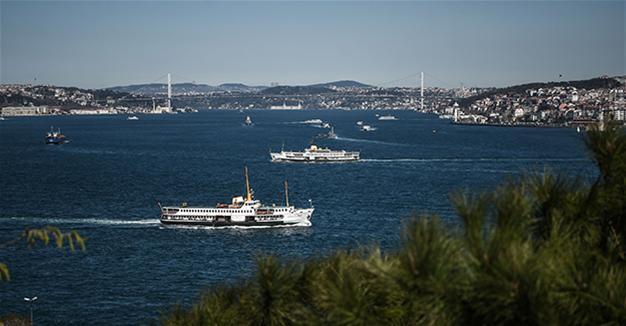Russia, Turkey face common growth challenges despite different exposures to commodity cycle: Moody’s
NEW YORK

AFP photo
Credit ratings for Russia and Turkey broadly reflect a deterioration in previously supportive credit fundamentals, including their growth potential and, to a lesser extent, fiscal metrics, Moody’s Investors Service said in a new peer comparison report on April 27.
The report reviews the credit strengths and challenges that characterize the two countries, and gives Moody’s forward-looking view of how the rating agency sees these drivers moving over the next 12 to 18 months.
“Turkey has greater economic growth potential, but Russia’s economy is larger and wealthier,” said Kristin Lindow, a Moody’s senior vice president and co-author of the report.
“We expect real GDP growth of around 3 percent in Turkey over the next four years, twice that of Russia’s 1.5 percent, underpinned by Turkey’s more favorable demographics. That said, downside risks proliferate with respect to Turkey’s growth, while upside risks arguably dominate for Russia given that the worst of its recent crisis has passed.”
With entrenched structural constraints – low savings rates, declining total factor productivity and labor market inefficiencies in Turkey, as well as constrained household incomes, an aging work force and over-dependence on hydrocarbons in Russia – sluggish investment will likely suppress the potential growth of both countries in the absence of targeted structural reforms, according to the report.
Turkey’s demographics are more supportive of growth potential than Russia’s, given that 57.9 percent of its population was under the age of 35 in 2016, compared to 44.2 percent in Russia, according to United Nations figures.
Public debt in both Russia and Turkey is set to rise over the next two years, although the increases will be modest as a share of GDP, noted the report.
While both countries usually run small budget deficits, maintaining these has become more difficult for Russia and Turkey as a result of country-specific challenges: Lower oil prices in Russia’s case and lower growth in Turkey’s, it added.
Event risk in Russia is driven by geopolitics, while external finances and domestic politics are the main risk factors in Turkey, concluded the report.
Moody’s in February lifted its outlook on Russia’s credit rating, upgrading it from “negative” to “stable,” citing both a fiscal strategy that is expected to lower the country’s dependence on energy and replenish its savings and the gradual economic recovery.
The ratings agency confirmed Russia’s Ba1 rating, which is one notch below investment grade.
On March 17, Moody’s cut its outlook on Turkey’s rating to “negative” after risks to the country’s credit profile “rose materially” in the preceding months. The agency also rates Turkey at Ba1.
